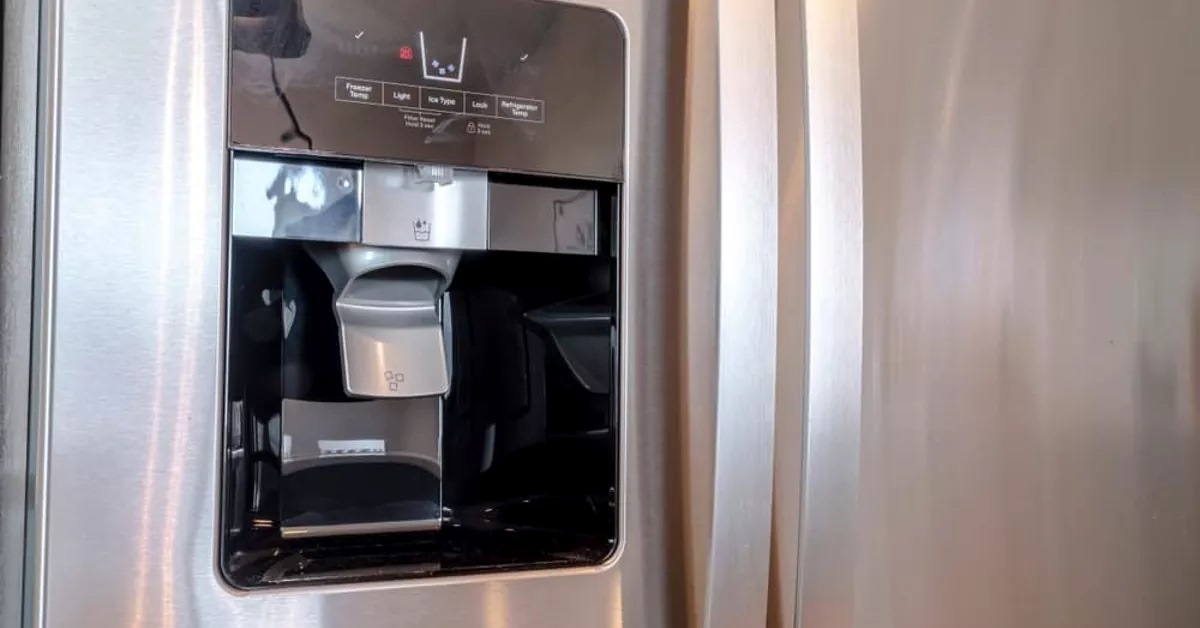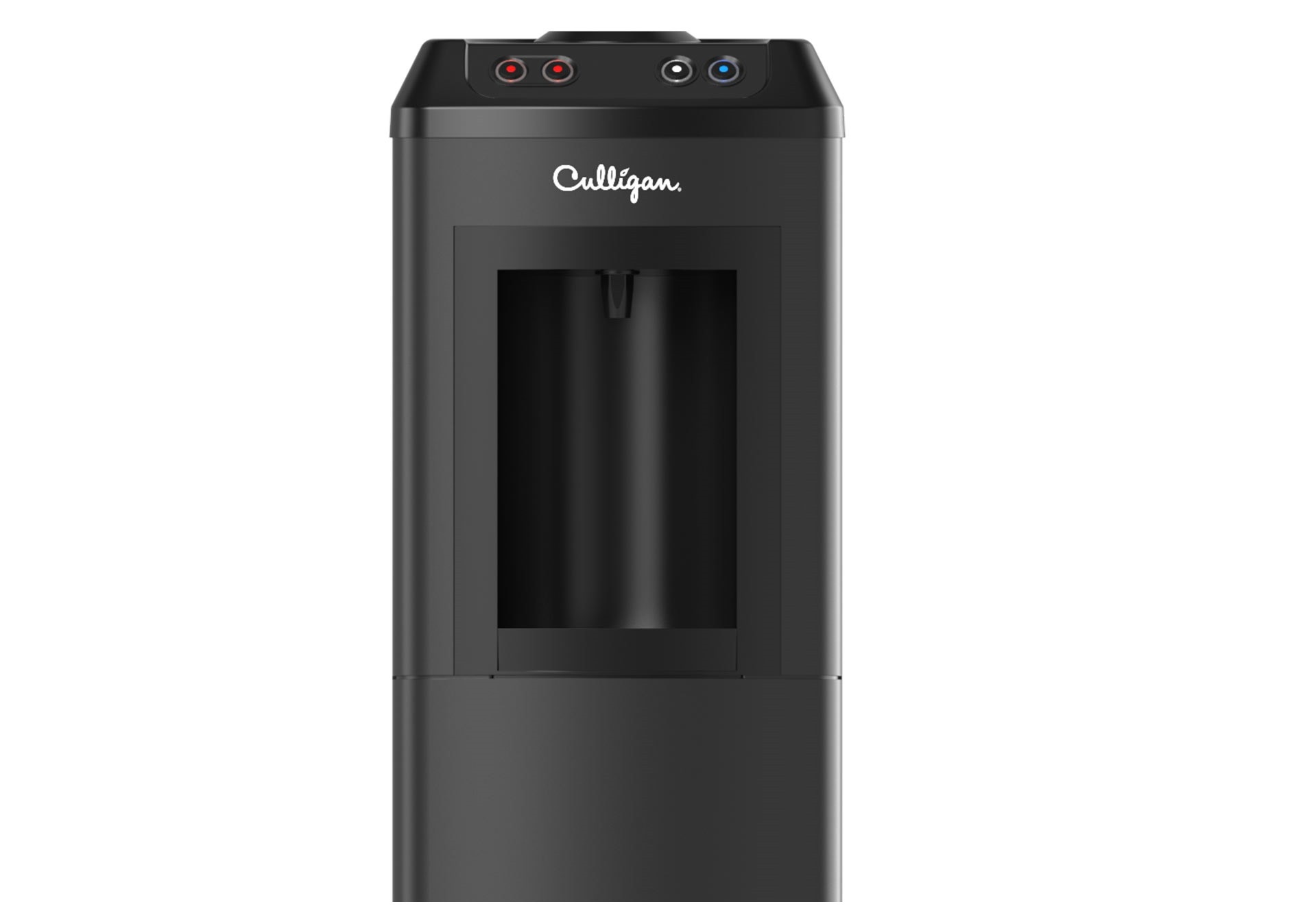

Articles
How Does Water Dispenser In Fridge Work
Modified: August 27, 2024
Discover how water dispensers in fridges work with our informative articles. Stay hydrated and learn about the technology behind this convenient appliance.
(Many of the links in this article redirect to a specific reviewed product. Your purchase of these products through affiliate links helps to generate commission for Storables.com, at no extra cost. Learn more)
Introduction
A water dispenser in a fridge is a convenient feature that allows you to access cold, filtered water without the need for additional appliances or bottles. It provides a refreshing way to stay hydrated, especially during hot weather or when you’re in a hurry. But have you ever wondered how this system works?
In this article, we will explore the inner workings of a water dispenser in a fridge and shed light on its functionality, components, and maintenance. From understanding the cold water functionality to the importance of the filter system, we will dive into all the details.
So let’s dive in and explore how exactly a water dispenser in a fridge works and how it can bring ease and convenience to your daily life.
Key Takeaways:
- Enjoy refreshing, cold water on demand with a fridge water dispenser’s dedicated cooling system, independent of the main refrigeration, ensuring consistent chilliness even during fridge use.
- Keep your water dispenser in top condition by understanding its components, maintenance, and troubleshooting techniques, ensuring clean, cold, and convenient water access for years to come.
Read more: Why Is Water Dispenser On Fridge Not Working
Components of a Water Dispenser in a Fridge
A water dispenser in a fridge consists of several key components working together to deliver cold, filtered water on demand. Understanding these components will give you a better grasp of how the system operates.
1. Water Reservoir: The water reservoir is a storage tank located inside the fridge. It holds a certain amount of water that is ready to be dispensed. The capacity of the reservoir can vary depending on the model of the fridge. When you dispense water, it is replenished automatically to ensure a continuous supply.
2. Cooling System: The cooling system is responsible for keeping the water in the reservoir cold. It typically utilizes a combination of a compressor and cooling coils to chill the water to the desired temperature. This ensures that you always have access to refreshing and cold water whenever you need it.
3. Filter System: A crucial component of a water dispenser in a fridge is the filter system. It ensures that the water is clean and free from impurities. The filter removes contaminants such as chlorine, sediment, and other particles, improving the taste and quality of your drinking water. It is important to change the filter regularly to maintain the effectiveness of the system.
4. Dispenser Nozzle: The dispenser nozzle is where the water is released when you press the dispenser lever or button. It is designed to deliver a controlled stream of water, allowing you to fill your glass or bottle without spills or splashing. Some models may also have options for dispensing different quantities of water, such as a measured pour or continuous flow.
5. Dispenser Controls: To operate the water dispenser, most fridge models feature intuitive controls located on the exterior of the door. These controls allow you to activate the dispenser, adjust the temperature, and control other settings depending on the specific features of your fridge. They may include buttons, dials, or touch sensors for easy and convenient operation.
Having a clear understanding of these components will help you appreciate how the different parts work seamlessly together to provide you with cold, filtered water at your fingertips. Now that we’ve explored the components, let’s move on to understanding the cold water functionality of a fridge water dispenser.
Cold Water Functionality
The cold water functionality is one of the key features of a water dispenser in a fridge. It ensures that you always have access to refreshing, chilled water whenever you need it. But how exactly does this functionality work?
The cooling system in the fridge is responsible for maintaining the temperature of the water stored in the reservoir. When you dispense water from the fridge’s water dispenser, the cooling system kicks into action to ensure that the water remains cold.
The cooling system consists of a compressor and cooling coils. The compressor compresses a refrigerant, typically a gas or liquid coolant, and circulates it through the cooling coils. As the refrigerant moves through the coils, it absorbs heat from the water in the reservoir, cooling it down in the process.
Once the water dispenser is activated, the cold water from the reservoir is pushed through a series of tubes, ensuring a steady flow to the dispenser nozzle. As the chilled water travels through these tubes, it maintains its low temperature, ready to be dispensed at any time.
It’s important to note that the cooling system in the fridge works independently from the main refrigeration system. This means that even if you open the fridge door or use the freezer compartment, the cold water functionality of the water dispenser remains unaffected.
However, it’s worth mentioning that the cooling effectiveness of the water dispenser may vary depending on the ambient temperature of the room or the frequency of door openings. Factors such as the location of the fridge, the insulation of the reservoir, and the overall efficiency of the cooling system can also impact the temperature of the dispensed water.
To maximize the cooling efficiency and ensure that you always have cold water available, it’s advisable to keep your fridge at a consistent temperature and avoid placing hot items near the water dispenser area. Additionally, allowing the water dispenser to dispense a small amount of water before collecting a full glass can ensure that you get the coldest possible water.
Now that we’ve explored the cold water functionality, let’s move on to understanding the importance of the filter system in a fridge water dispenser.
Filter System
The filter system in a water dispenser in a fridge plays a crucial role in ensuring that the water you consume is clean, fresh, and free from impurities. It is designed to remove contaminants and improve the overall taste and quality of the water.
The filter system typically consists of one or more filters that are designed to target specific impurities commonly found in water. These filters are usually made of activated carbon, which has microscopic pores that can trap particles, chemicals, and odors.
When the water passes through the filter, the activated carbon captures and absorbs impurities such as chlorine, sediment, rust, and other organic compounds. This helps to reduce unpleasant tastes and odors, giving you cleaner and better-tasting water.
Over time, the filter will become saturated with impurities, reducing its effectiveness. It is important to follow the manufacturer’s recommendations and replace the filter at regular intervals. This can vary depending on the usage, but a general guideline is to replace the filter every six months or according to the filter’s lifespan indicated on the packaging.
Replacing the filter not only ensures that you continue to have clean and fresh water, but it also helps to maintain the proper functioning of the water dispenser. A clogged or dirty filter can put additional strain on the water dispenser system, causing decreased water flow or even potential damage to the internal components.
Most fridges with water dispensers have a filter indicator light that alerts you when it’s time to replace the filter. Some models may even have a digital display that provides a more accurate indication of the filter’s condition. Paying attention to these indicators is crucial to ensure the optimal performance of the filter system.
In addition to timely filter replacements, it is also recommended to regularly clean the dispenser nozzle and the surrounding area to prevent the buildup of bacteria or mold. Following the manufacturer’s instructions for maintenance and cleaning will help ensure the longevity and sanitary operation of your fridge water dispenser.
Now that we’ve covered the importance of the filter system, let’s move on to understanding the dispenser controls and how they allow you to conveniently access your chilled water.
The water dispenser in a fridge works by connecting to a water supply line, which is then filtered and chilled before being dispensed through a spout on the front of the fridge. Make sure to regularly change the water filter to maintain water quality.
Dispenser Controls
Dispenser controls are an essential part of a water dispenser in a fridge, providing the user with easy and convenient access to cold, filtered water. They allow you to activate the dispenser, adjust settings, and customize your water delivery options.
The type and layout of dispenser controls can vary depending on the model and brand of the fridge. However, here are some common functions and features you might find:
1. Dispenser Activation: The primary function of the dispenser controls is to activate the water dispenser. This can be done through the use of buttons, levers, or touch sensors located on the exterior of the fridge door. Once activated, the dispenser will start delivering water according to your chosen settings.
2. Temperature Adjustment: Many fridge water dispensers allow you to adjust the temperature of the cold water. This feature is useful if you prefer your water slightly colder or less chilled. The temperature adjustment options can range from a few degrees Celsius to specific temperature settings.
3. Water Measurement Options: Some fridge models offer different options for dispensing water. For example, you may have the choice to dispense a specific measured amount of water, such as a cup or ounce, or to have a continuous flow until you manually stop it. This enables you to control the quantity of water you dispense depending on your needs.
4. Filter Indicator: As mentioned earlier, the filter indicator light or display is an important part of the dispenser controls. It alerts you when it’s time to replace the filter, ensuring that you always have clean and fresh water. Paying attention to this indicator will help maintain the effectiveness of the filter system.
5. Child Lock: Some fridge water dispensers come with a child lock feature to prevent accidental activation, especially if you have young children at home. This feature provides an additional layer of safety and peace of mind, ensuring that the water dispenser can only be operated by adults.
6. Energy-saving Modes: To promote energy efficiency, certain fridge models have energy-saving modes or automatic shut-off features for the water dispenser. This helps conserve power when the dispenser is not in use for an extended period, reducing energy consumption and environmental impact.
It’s worth noting that the specific features and controls can vary between different fridge models, so it’s important to consult the user manual or manufacturer’s instructions to understand the functions and operation of your particular water dispenser.
Now that we’ve looked at the dispenser controls, let’s move on to discussing the maintenance and troubleshooting of a water dispenser in a fridge to keep it running smoothly.
Read more: How Does Water Dispenser Work
Maintenance and Troubleshooting
Maintaining a water dispenser in a fridge is essential to ensure its optimal performance and longevity. Regular maintenance will help keep the water clean, the dispenser functioning properly, and prevent potential issues. Here are some maintenance tips and troubleshooting techniques:
1. Regular Cleaning: Clean the dispenser nozzle and the surrounding area regularly to prevent the buildup of bacteria, mold, or mineral deposits. Use warm soapy water or a mild cleaning solution recommended by the manufacturer, and rinse thoroughly. Avoid using abrasive cleaners or harsh chemicals that could damage the dispenser or affect the taste of the water.
2. Filter Replacement: Follow the manufacturer’s guidelines and replace the water filter as recommended. Regular filter replacements ensure that the water remains clean and free from impurities. Depending on usage and water conditions, it is generally advisable to replace the filter every six months or as indicated by the filter’s lifespan.
3. Check for Leaks: Periodically inspect the dispenser and the connections for any signs of leaks. If you notice any leaks, immediately turn off the water supply and consult the user manual or contact customer support for assistance. Addressing leaks promptly will prevent water damage to your fridge and surrounding areas.
4. Check Water Line Connections: Ensure that the water line connections are secure and free from kinks or blockages. If you experience a decrease in water flow or notice any issues with water dispensing, check the water line and connections for any obstructions or damage. Clear any blockages or contact a professional if needed.
5. Reset the System: If the dispenser stops working or experiences any malfunctions, try resetting the system. This can be done by turning off the power to the fridge for a few minutes and then turning it back on. Refer to the user manual for specific instructions on how to reset your fridge’s water dispenser system.
6. Seek Professional Help: If you encounter persistent issues or are unsure about troubleshooting steps, it’s best to contact the manufacturer’s customer support or consult a professional technician for assistance. They can provide guidance or schedule a service visit to diagnose and resolve any underlying problems.
By following these maintenance practices and troubleshooting techniques, you can keep your water dispenser in a fridge in optimal condition, ensuring clean, cold, and refreshing water for you and your family.
Now that we’ve covered the maintenance and troubleshooting aspects, let’s summarize the article and wrap it up.
Conclusion
A water dispenser in a fridge is a convenient feature that provides you with cold, filtered water whenever you need it. Understanding its components, functionality, and maintenance requirements can help you make the most of this useful appliance.
The components of a water dispenser in a fridge, such as the water reservoir, cooling system, filter system, dispenser nozzle, and dispenser controls, work together to ensure a seamless and enjoyable water dispensing experience.
The cold water functionality relies on a dedicated cooling system that chills the water in the reservoir, allowing you to enjoy refreshingly cold water on demand. It operates independently from the main refrigeration system, ensuring consistent cooling even when the fridge door is opened or the freezer is being used.
The filter system plays a crucial role in enhancing the quality and taste of the water by removing contaminants and odors. Regularly replacing the water filter is important to maintain the effectiveness and cleanliness of the water dispenser.
Dispenser controls provide easy access to activate the dispenser, adjust temperature settings, choose water measurement options, and receive alert notifications for filter replacement. These controls enhance convenience and customization for the user.
Maintenance is vital for keeping the water dispenser in optimal condition. Regular cleaning of the dispenser nozzle and proper filter replacement are essential steps in ensuring the cleanliness and functionality of the system. Troubleshooting techniques, such as resetting the system or checking for leaks, can help address any issues that may arise.
By following these maintenance practices and troubleshooting techniques, you can enjoy the benefits of a well-functioning water dispenser in your fridge for years to come.
In conclusion, a water dispenser in a fridge offers a convenient and refreshing way to access cold, filtered water at home. By understanding its components, functionality, and maintenance requirements, you can make the most of this feature and enjoy clean and delicious water whenever you need it.
Curious about keeping your fridge in top shape? If understanding your water dispenser was useful, you'll definitely want to learn how to clean a refrigerator ice maker. Regular upkeep not only prevents issues but ensures every ice cube is fresh and clear. Dive into our next guide that simplifies the process of refrigerator maintenance, making sure your appliance runs smoothly. Don't let a dirty ice maker spoil your next cold drink!
Frequently Asked Questions about How Does Water Dispenser In Fridge Work
Was this page helpful?
At Storables.com, we guarantee accurate and reliable information. Our content, validated by Expert Board Contributors, is crafted following stringent Editorial Policies. We're committed to providing you with well-researched, expert-backed insights for all your informational needs.















0 thoughts on “How Does Water Dispenser In Fridge Work”